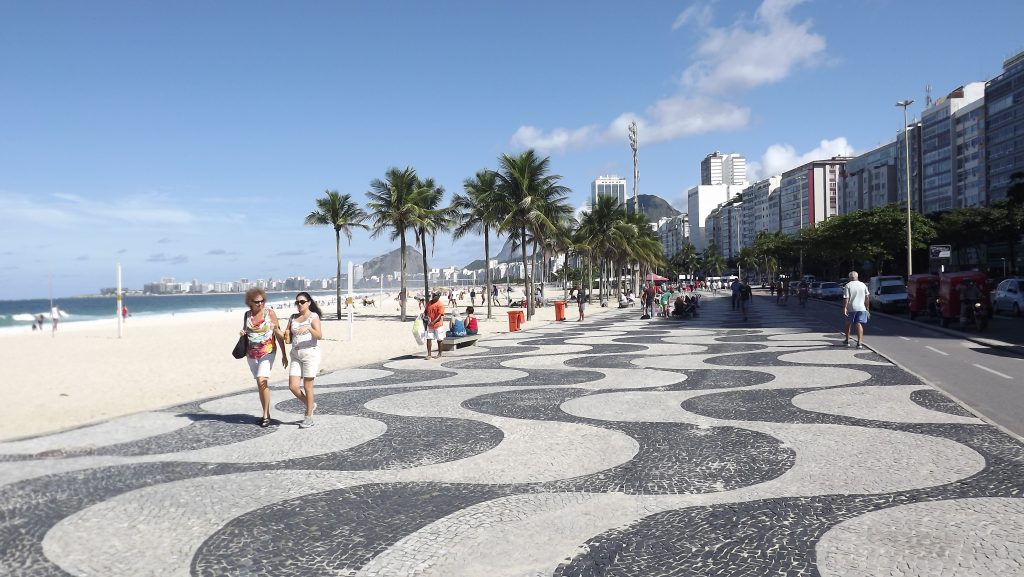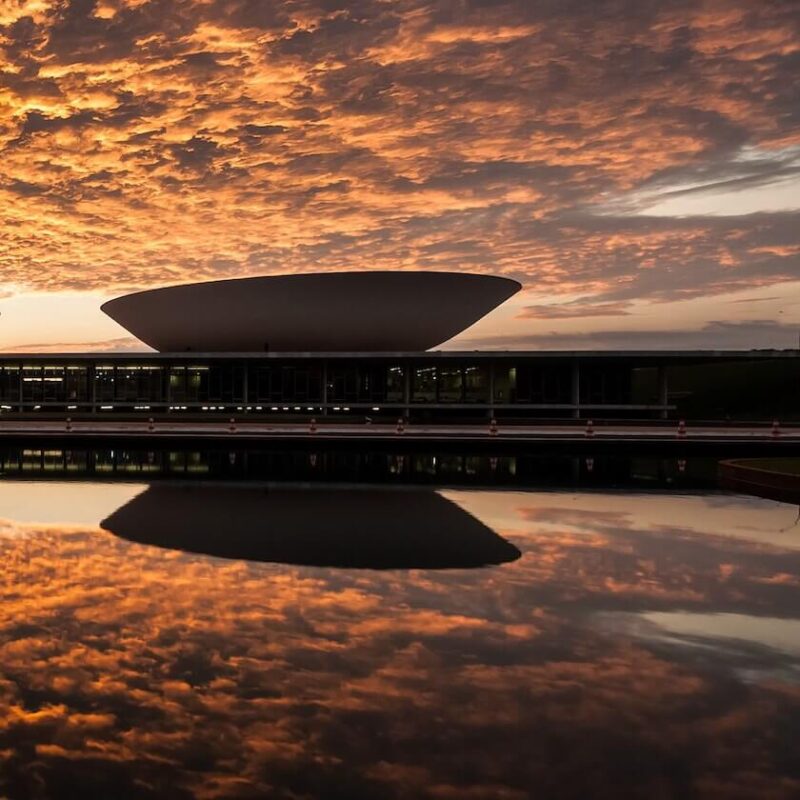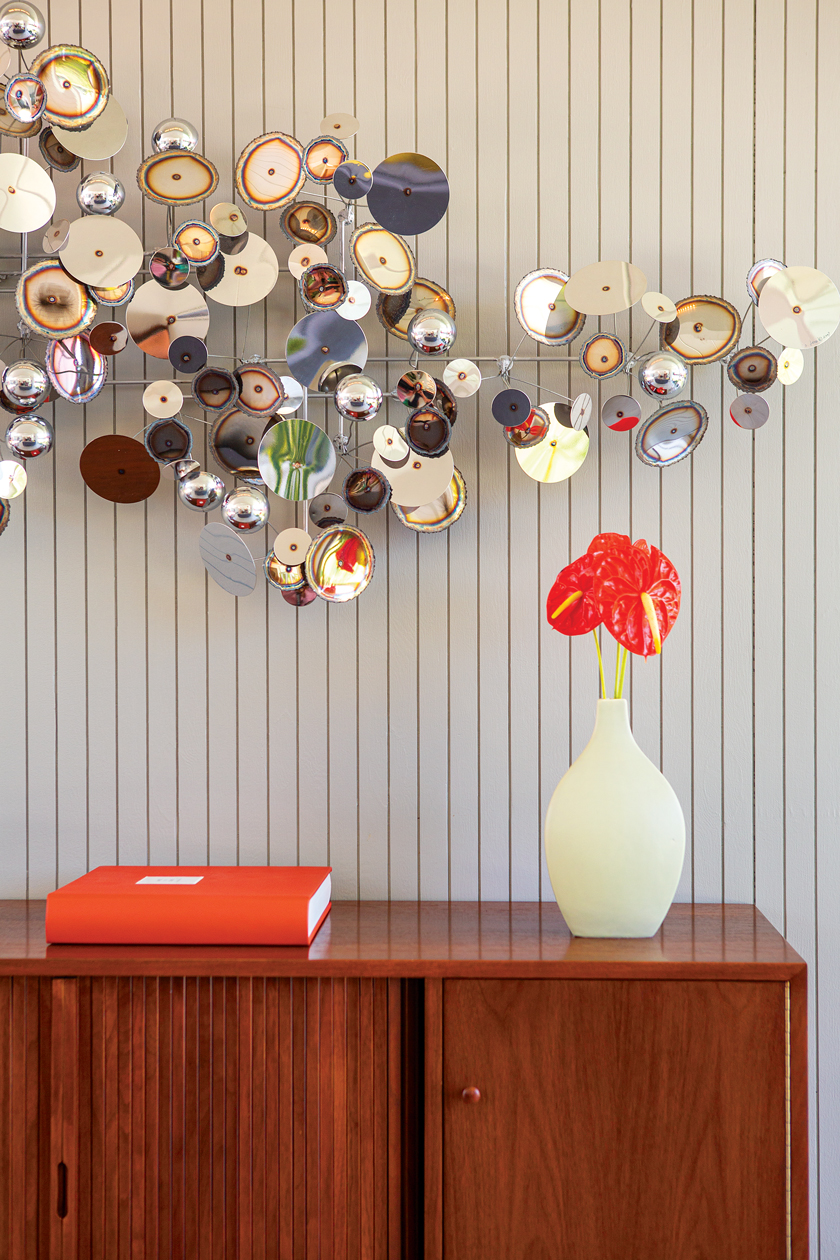Modernism was a global movement, and Brazilian Modernism took shape in a particularly Brazilian form. Like Modernism in the US and Europe, Brazilian Modernism grew from similar instincts to create simplified designs that united form and function and drew from organic and geometric shapes. In Brazil, as well as much of Latin America, the story was also shaped by political tumult and a vision to find an identity apart from colonialism. As a result, Brazilian Modern furniture is characterized by organic materials and a quest for Brazilian identity. Here we highlight a handful of Brazilian Modern’s prominent names from architects to furniture designers and several multi-disciplinary practitioners.

Oscar Niemeyer
Inspired by curves and the work Le Corbusier, Rio de Janiero-born architect Oscar Niemeyer (1907-2012) designed over 600 building projects in his lifetime, including many internationally acclaimed civic buildings in Brasilia. His love for abstract and curved forms shaped these projects to stunning effect. Some of his best-known works include the parabolic Church of Saint Francis of Assisi, the Cathedral of Brasilia, and the National Congress of Brazil.

Lina Bo Bardi
The Italian-born architect spent most of her life in Brazil, though before she emigrated to Brazil, she worked with Gio Ponti in Italy. and she is perhaps best-known for her design of the São Paolo Museum of Art as well as Casa de Vidro, the Glass House where she and her husband lived. In addition to architecture, she also designed furniture and jewelry and international respect, despite the challenges that being a woman and a foreigner posed to her work in midcentury Brazil.
 The undulating mosaic of the walkway at Rio’s Copacabana beach is perhaps Burle Marx’s most famous work. Photo by Mteixeira62/Wikimedia Commons/CC-by-SA.
The undulating mosaic of the walkway at Rio’s Copacabana beach is perhaps Burle Marx’s most famous work. Photo by Mteixeira62/Wikimedia Commons/CC-by-SA.
Roberto Burle Marx
Roberto Burle Marx’s (1909-1994) prolific career spanned multiple disciplines. Burle Marx is known primarily as a Brazilian landscape architect, but his artistic repertoire included painting, textiles, jewelry, even stage set designs. Burle Marx’s breadth of visual aptitude combined with his love for Brazil’s native plants made him a prolific and colorful landscape architect. He designed thousands of gardens/landscapes and discovered 50 new plant species in his work.

José Zanine Caldas
The Brazilian architect, artist, furniture designer/carpenter José Zanine Caldas (1919-2001) created architectural scale models for prominent architects of the day, such as Oscar Niemeyer, as well as plywood furniture. He left that venture behind when he moved to the South Atlantic coastal town of Nova Viçosa. There, rather than aiming for easily reproducible designs, he took inspiration from the local craftsmanship and organic materials for unique designs. For instance, many of his later furniture pieces are carved from a single stump.

Joaquim Tenreiro
Portuguese-born, Joaquim Tenreiro (1906-1992) emigrated with his family to Brazil in the 1920s and designed furniture for the prominent Brazilian architect Oscar Niemeyer. He drew from Brazil’s native hardwoods and often designed with wicker and cane, which helped to keep the furniture lightweight and more able to withstand Brazil’s heat and humidity. He was also a painter and sculptor and died in Brazil in 1992.

Sergio Rodrigues
Sergio Rodrigues (1927-2014) helped get Brazil Modernism’s interior design on the world stage when his chair design Mole (Portuguese for “soft”) won an international design competition held in Cantu, Italy in 1961. He also used Brazilian indigenous hardwoods such as jacaranda and imbuia. His witty and memorable modern designs embody something of the Brazilian way of being and has him referred to as “the father of Brazilian design.”

Jorge Zalszupin
Polish-born Jorge Zalszupin (1922-2020) emigrated to Brazil after WWII. He, too, designed using Brazil’s indigenous hardwoods, including imbuia and rosewood. Wanting design cohesion between all aspects of an interior, he founded the company L’Atelier, which took a collaborative approach between architects, furniture designers, engineers and other professionals to inform the design projects holistically. The company was active in the construction of many of capital Brasilia’s new structures, and the company’s work is evident throughout Brasilia.
For more on Mid Century Modernism’s architects and designers, see our Modernist Index. To discover iconic and little-known gems of MCM architecture, browse Retro Road Trip. And, of course, don’t forget to follow us on Instagram, Facebook and Pinterest for more Atomic Ranch articles and ideas!












